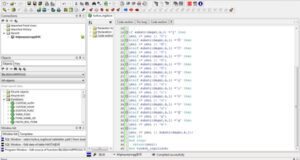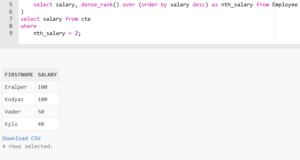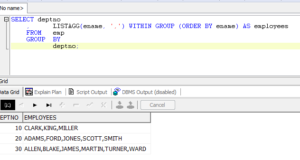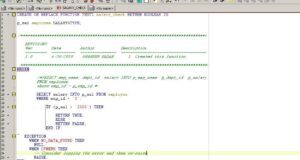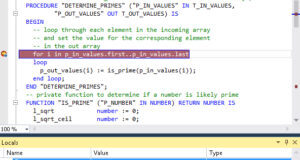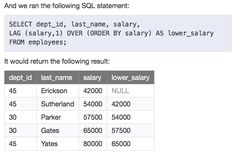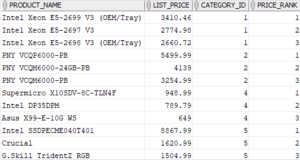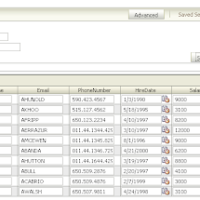Tag: Oracle SQL
The Oracle/PLSQL STDDEV function returns the standard deviation of the number list. The STDDEV function can be used in two ways - as an aggregate function or as an analytical function. Syntax #1...
Oracle/PLSQL NTH_VALUE function returns the nth value in an ordered set of values from the analytical window. It is similar to FIRST_VALUE and LAST_VALUE except that NTH_VALUE allows you to find...
Oracle/PLSQL LISTAGG function combines measure_column values for each group based on order_by_clause. Oracle/PLSQL syntax of LISTAGG function LISTAGG (measure_column_id [,...
The Oracle/PLSQL LEAD function is an analytical function that allows you to query more than one row in a table, while not having a table to join. Returns values from the next row in the table. To...
Oracle/PLSQL LAST_VALUE function returns the last value in an ordered set of values from the analytical window. It is similar to the functions FIRST_VALUE and NTH_VALUE. Oracle/PLSQL syntax of...
Oracle/PLSQL LAG function is an analytical function that allows you to query more than one row in a table, while not having an attached table. This returns values from the previous row in the...
Oracle/PLSQL FIRST_VALUE function returns the first value in an ordered set of values from the analytical window. It is similar to FIRST_VALUE and NTH_VALUE. Oracle/PLSQL syntax of FIRST_VALUE...
Oracle/PLSQL RANK function returns the value rank in the value group. It is very similar to the DENSE_RANK function. However, the RANK function may not return a consecutive ranking if the values...
Oracle/PLSQL CREATE TABLE operator allows you to create and define a table. CREATE TABLE syntax in Oracle/PLSQL CREATE TABLE table_name_id ( column1_id datatype [ NULL | NOT NULL...
The Oracle/PLSQL function DENSE_RANK returns the string rank in an ordered group of strings. It is very similar to the RANK function. However, the RANK function can cause an inconsistent ranking...
Oracle/PLSQL CUME_DIST function returns the cumulative distribution of values in the value group. The CUME_DIST function will return a value that is > 0 and <= 1. You can use CUME_DIST in...
Oracle/PLSQL COVAR_SAMP function returns selective covariance of a set of number pairs. Oracle/PLSQL syntax of function COVAR_SAMP COVAR_SAMP( expression1_id expression2_id )where:...
Oracle/PLSQL COVAR_POP function returns covariance of a set of pairs of numbers. Oracle/PLSQL syntax of COVAR_POP function COVAR_POP(expression1_id expression2_id )where:...
Oracle/PLSQL CORR function returns the coefficient of correlation of multiple pairs of numbers. Syntax of Oracle/PLSQL function CORR CORR( n1,m1 ) [ over (analytic_clause_id) ]where:...
The SQL BETWEEN condition allows you to easily check if the expression is in the range of values (inclusive). It can be used in the SELECT, INSERT, UPDATE or DELETE operator. Syntax for BETWEEN...
SQL Indexes - The index is a method of performance tuning that allows for much faster retrieval of records. The index creates a record for each value that appears in the indexed columns. Each...

